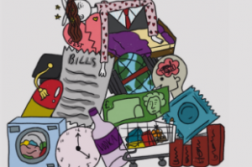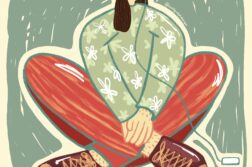TW: SEXUAL ASSULT/ RAPE / HARASSMENT
‘Yeah, but you were drunk?’
‘I’ve seen what you wear on a night out! Think about covering up a bit.’
These are some of the things that have been said to me when I finally decided to open up after I was sexually assaulted at a party. My true fears came true when instead of support, I was met with cruel words and accusations. I was branded as a liar and told that I had misread the situation and that everything was consensual, despite the fact that I never gave consent.
This blame left me feeling broken and made me afraid to talk about the events that had caused me so much suffering. In the moments when I needed someone the most, I was the most alone.
97% of women between the ages of 18-24 have been a victim of sexual harassment. Only 4% report these offenses, and 45% believe that it would not help anything to do so. Victim-blaming is so entrenched in society that people often jump to accuse the victim of lying before they even listen to their story. When a woman is raped in a park, people ask why she was walking alone. When a woman is assaulted at a party, people question if she was intoxicated. Victim-blaming is rife, but offers no helpful solution to these statistics, and instead leaves women afraid to open up.
These cruel words only exist to shift the blame away from men in society, and once again continue the dangerous narratives of slut-shaming, etc. It’s nothing but a reminder of the existence of a damaging patriarchy. Women are marginalised in order to protect the men who commit these crimes, and this can have traumatic effects.
Questions such as ‘what was she wearing?’ are not only asked by your average person, but are also repeated in professional environments, such as at work or even in court. It can be difficult for a survivor to escape these questions, and all this does is make it harder for them to come forward and tell their story. Often, this forces survivors to just ‘get on’ with a situation which is deeply traumatic, and the fact that this still happens is appalling.
An art exhibit by Jen Brockman called ‘what were you wearing?’ is a thought-provoking depiction of the horrors of victim-blaming. It’s based on student survivors, allowing them to tell their story alongside the outfit they were wearing at the time of their sexual assault/harassment, thus displaying that there is no common theme in victims’ clothing. Nevertheless, ‘what were you wearing?’ is still a prevalent question asked to determine if victims should somehow take the blame for the horrific violation perpetrated against them. Please, if you get a moment, take a look at the exhibition and listen to the stories of the brave, and blameless, individuals.
Victim-blaming is nothing but a manifestation of toxic misogyny, and it’s important to put an end to it in order to create a safer space for survivors to talk about and report sexual assault and harassment.
Links for further support:
https://rapecrisis.org.uk/ – Rape Crisis Helplines
https://www.nhs.uk/live-well/sexual-health/help-after-rape-and-sexual-assault/ – NHS Support
https://www.itv.com/thismorning/articles/sexual-harassment-helplines – ITV list of helplines for sexual harassment victims



